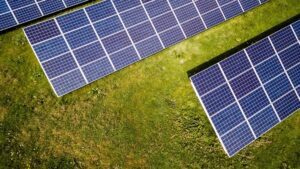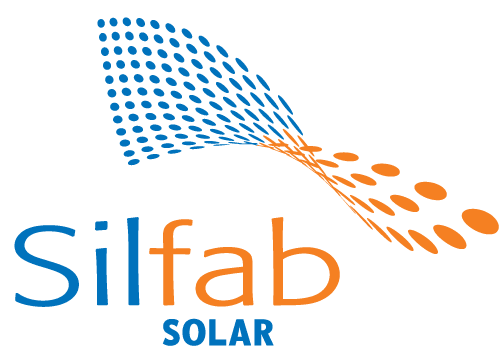As more homeowners and businesses invest in solar energy common interest continues to rise. However, even with the rise in popularity there is still much confusion about the perks of getting your energy from solar panels. But, have no fear. We have the answers to some of the most common questions our customers ask. Take a moment to educate yourself before investing in solar panels.
Will solar panels really reduce my energy costs?
Yes. A solar panel system should provide at least some savings on your energy bill. Most solar systems come with a performance guarantee, Sullivan Solar Power will even write you a check if their panels don’t perform up to standard.
The amount of savings on your energy bill will depend on several factors such as the size of your system and your energy use. Just like with grid electricity, It’s important to be mindful about how much energy you are consuming
How long do solar panels last?
Depending on the quality of the panels themselves, you can expect a set of solar panels to last anywhere between 25 and 40 years, maybe even longer.
Even more impressive, the National Renewable Energy Laboratory found that most solar panels operate at more than 90 percent of their original capacity after 20 years of use. And since most solar panels come with a 25-year manufacturer warranty, even if something does go wrong the warranty usually covers it.
Will they break?
Even though it is rare, some solar systems do experience a major malfunction. A report released by a University of Texas research center found that out of 255 systems that were inspected over a four year period, only two had a major system failure. The inverted was the problem in both cases, the part responsible for converting solar energy into electricity.
A new converter will cost around $3,000 to replace if it isn’t covered by your warranty. The report also found minor problems, costing less than $25 to fix, in 54 homes.
Will I know when something is wrong?
You might not realize an issue in your solar power system right away. That’s why it is essential to regularly check your power output. A decrease in power supply is usually the first sign of a problem.
Luckily, solar panel companies have made it easier than ever to check on your system with web-based updates and apps you can download that will alert you if their is a decrease in production.
Do solar panels crack over time?
The short answer to this question is, no.
You might assume that the constant exposure to the heat of the sun and other elements would cause solar panels to crack or deteriorate. But most panels are made with tempered glass and built to withstand an extended period of time, even in the harshest of elements.
Can solar panels start a fire?
It is unlikely that the solar panels themselves would be the direct cause of a fire, according to the National Fire Protection Research Foundation. However, a solar power system might create difficulties for firefighters when responding to fires.
James Edmonds, a retired Colorado firefighter, explains that the first thing firefighters do when they arrive at a fire is cut the power source to the building and cut a hole in the roof. A solar panel system complicates both of these goals. But with solar panels becoming more popular than ever, new codes that require more open space on solar paneled roofs.
- Home
- Residential
- Commercial
- Tesla
- Testimonials
- About Us
- Contact Us
Month: June 2015
Solar Power is Making Our World Better
Written by goldensolar on . Posted in Solar Power. Leave a Comment
 With the detrimental effects of fossil fuels becoming increasingly apparent, many private citizens and companies alike have begun to explore the world of alternative energy. There are many different methods of generating electricity that do not produce the damaging emissions that are known to contribute to climate change. Wind power is one, but it necessitates a lot of money and resources for it to be viable. Solar power, though, has as much to offer, but can be implemented even on a small scale. Whether you own a home or a building, solar panels can be a way to generate electricity, without having to rely as much on fossil fuels. A solar power system is not terribly costly to implement, and it can be both financially advantageous and beneficial to the environment. The biggest impediment is simply overcoming the logistical limitations.
The first of these logistical issues is how to go about accumulating and storing the electrical energy, so it can be utilized. Obviously, you need to install the solar panels themselves, but they are only one of several components of a solar panel system. The panels can be set up, atop your roof or in any nearby open space that comprises part of your property. Needless to say, they need to be located somewhere that receives large amounts of sunlight, so avoiding areas that are typically covered by shade is paramount. Furthermore, in addition to collecting the solar energy, a solar power system needs to be able to move it and store it, which requires powerful batteries, capable of storing the electricity for extended periods of time. After all, sunlight is not always present. Your solar power installation will not be complete, until each of these components are in their proper place.
In addition to the logistics of actually accumulating and storing solar energy, there is the dilemma of how to go about rewarding people for using solar energy. It is the feeling of many progressives that solar energy should be encouraged, by way of subsidization. On the state, federal and even local level, this has begun to happen, though many feel that more needs to be done. One way in which solar power is being subsidized is through the use of tax credits. Businesses and individuals that do adopt solar power systems can receive generous tax write-offs, for their participation in eco-friendly energy solutions. Not only that, there are even programs to subsidize the solar power installation process, which is the most costly aspect of implementing solar power. These policies are necessary, in order to help reduce our total emissions, and without them we will simply leave all the power in the hands of the oil and gas companies. This is another benefit of realigning our governmental policies to favor renewable energy. It reduces the stranglehold that the big oil, coal, and gas companies have on local, state and federal politics.
With the detrimental effects of fossil fuels becoming increasingly apparent, many private citizens and companies alike have begun to explore the world of alternative energy. There are many different methods of generating electricity that do not produce the damaging emissions that are known to contribute to climate change. Wind power is one, but it necessitates a lot of money and resources for it to be viable. Solar power, though, has as much to offer, but can be implemented even on a small scale. Whether you own a home or a building, solar panels can be a way to generate electricity, without having to rely as much on fossil fuels. A solar power system is not terribly costly to implement, and it can be both financially advantageous and beneficial to the environment. The biggest impediment is simply overcoming the logistical limitations.
The first of these logistical issues is how to go about accumulating and storing the electrical energy, so it can be utilized. Obviously, you need to install the solar panels themselves, but they are only one of several components of a solar panel system. The panels can be set up, atop your roof or in any nearby open space that comprises part of your property. Needless to say, they need to be located somewhere that receives large amounts of sunlight, so avoiding areas that are typically covered by shade is paramount. Furthermore, in addition to collecting the solar energy, a solar power system needs to be able to move it and store it, which requires powerful batteries, capable of storing the electricity for extended periods of time. After all, sunlight is not always present. Your solar power installation will not be complete, until each of these components are in their proper place.
In addition to the logistics of actually accumulating and storing solar energy, there is the dilemma of how to go about rewarding people for using solar energy. It is the feeling of many progressives that solar energy should be encouraged, by way of subsidization. On the state, federal and even local level, this has begun to happen, though many feel that more needs to be done. One way in which solar power is being subsidized is through the use of tax credits. Businesses and individuals that do adopt solar power systems can receive generous tax write-offs, for their participation in eco-friendly energy solutions. Not only that, there are even programs to subsidize the solar power installation process, which is the most costly aspect of implementing solar power. These policies are necessary, in order to help reduce our total emissions, and without them we will simply leave all the power in the hands of the oil and gas companies. This is another benefit of realigning our governmental policies to favor renewable energy. It reduces the stranglehold that the big oil, coal, and gas companies have on local, state and federal politics.How the Polluting Companies’ Dollar Give Solar Panels for the Poor
Written by goldensolar on . Posted in Solar Panels, Solar Power. Leave a Comment
 Recently the Californian government set the stage for affordable solar energy to low-income residents. About $14.7 million has been raised from the Golden State’s cap and the trade system to move the project of installing solar panels to underprivileged neighborhoods for free forward . This program aims to lessen the energy costs for families that could be of great help, as it also lessens the environmental footprints.
This approach limits the amount of greenhouse gases a company can emit on a regular basis, and it reprimands polluting companies, such as power plants and oil refineries to purchase credit for each ton consumed. This credit can be used to help families save a good amount of cash over the year.
The group is also planning to install the paneling for more than 1,600 families before the end of next year. These families will be able to save money every month for clothes, food, medical expenses, and so on. To support that, one of locals who can enjoy this kind of privilege is Roy Rivera. He lives with a disability and relies on a fixed income, that it’s almost impossible to make ends meet. However, because of this project, he’ll be able to save as much as $818 one energy costs during the first year of installation, and he can use that money to buy his other essentials.
Even though the use of solar energy can help in cutting down the family’s costs, the installation price can be quite expensive– it can cost $15,000 or more, and this is the main reason why a lot of low-income Americans aren’t capable of using their energy source. The price of installation alone restricts them. This was based on the findings made by the San Francisco Chronicle.
Based on the data gathered last year, there are more or less 3.5% of all rooftop solar installations across three different states, namely: Massachusetts, Maryland, and New York. The median household incomes fall below $39,999.
Though, there are more than 54% of installations in Maryland where the household income exceeds $90,000. This only implies one thing: people are interested in trying this source of energy if they’re capable with, and can pay it.
Thus, the California program is trying to alleviate this kind of financial burden to those residents who barely earn a living. If granted, this can be a win-win situation for both the company and residents as well.
Just like what the Vice’s Brian Merchant mentioned, being able to control the population business, that will allow the families to take advantage of that can be the best strategy for all.
This program also has the opportunity of increasing the ‘good optics,’ because everyone wants to have a cleaner environment, but the cost and expense of it are just some of the usual restrictions that make it impossible.
Recently the Californian government set the stage for affordable solar energy to low-income residents. About $14.7 million has been raised from the Golden State’s cap and the trade system to move the project of installing solar panels to underprivileged neighborhoods for free forward . This program aims to lessen the energy costs for families that could be of great help, as it also lessens the environmental footprints.
This approach limits the amount of greenhouse gases a company can emit on a regular basis, and it reprimands polluting companies, such as power plants and oil refineries to purchase credit for each ton consumed. This credit can be used to help families save a good amount of cash over the year.
The group is also planning to install the paneling for more than 1,600 families before the end of next year. These families will be able to save money every month for clothes, food, medical expenses, and so on. To support that, one of locals who can enjoy this kind of privilege is Roy Rivera. He lives with a disability and relies on a fixed income, that it’s almost impossible to make ends meet. However, because of this project, he’ll be able to save as much as $818 one energy costs during the first year of installation, and he can use that money to buy his other essentials.
Even though the use of solar energy can help in cutting down the family’s costs, the installation price can be quite expensive– it can cost $15,000 or more, and this is the main reason why a lot of low-income Americans aren’t capable of using their energy source. The price of installation alone restricts them. This was based on the findings made by the San Francisco Chronicle.
Based on the data gathered last year, there are more or less 3.5% of all rooftop solar installations across three different states, namely: Massachusetts, Maryland, and New York. The median household incomes fall below $39,999.
Though, there are more than 54% of installations in Maryland where the household income exceeds $90,000. This only implies one thing: people are interested in trying this source of energy if they’re capable with, and can pay it.
Thus, the California program is trying to alleviate this kind of financial burden to those residents who barely earn a living. If granted, this can be a win-win situation for both the company and residents as well.
Just like what the Vice’s Brian Merchant mentioned, being able to control the population business, that will allow the families to take advantage of that can be the best strategy for all.
This program also has the opportunity of increasing the ‘good optics,’ because everyone wants to have a cleaner environment, but the cost and expense of it are just some of the usual restrictions that make it impossible.









